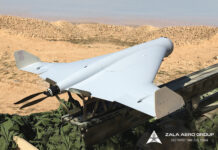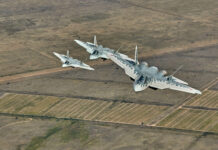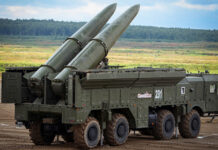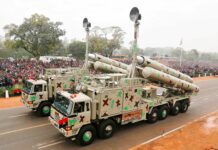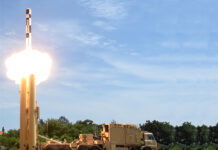Russia’s new ALTIUS-RU Medium Altitude Long Endurance UAV has become the first home-grown UAV to incorporate the on-board function of transmitting control commands to the UAV, and reconnaissance data from the UAV to the ground, via a satellite communication channel. This was announced on 27 March 2021 by the chief designer of the project, Ilya Matveev, in a special report entitled “Winged Hunters” by Alexander Rogatkin on the Russia-24 TV channel.
“This onboard satellite communications channel was developed in Russia, in particular for integration into our UAV. Our drone is the first to be equipped with this kind of radio communication capabilities,” he said. The satellite receiver is located under the UAV’s nose fairing.
The Russian media reported that this is the final version of the ALTIUS-RU UAV, following the development and testing of a number of prototypes.
Russia has been developing the ALTIUS UAV since 2011 and in 2018, the project was transferred to the Kazan division of the Ural Civil Aviation Plant (UZGA). The Russian Ministry of Defense has signed a contract with UZGA to produce the initial batch of ALTIUS-RU UAVs. UZGA is experienced in drone production, as it manufactured the IAI SEARCHER under license and renamed it FORPOST, after which it localised and upgraded it to the FORPOST-R option.
ALTIUS UAV Features
ALTIUS has a wingspan of under 30m and is propelled by two 500 hp VK-800C turboprop engines developed by the Klimov Design Bureau. It can climb to a height of 14km with flight autonomy of up to 48 hours and an empty weight of six tons. The drone can carry a 2t combat payload over a combat range of about 3,500km.
The fixed-wing design of the UAV incorporates a large high-mounted wing, a V-tail configuration and a three-leg retractable landing gear. The flight, including the take-off and landing stages, can be performed automatically. It is expected to perform reconnaissance, strike and electronic attack missions for the Russian Air Force and Navy.
ALTIUS will also have artificial intelligence elements to interact with fifth-generation Sukhoi Su-57 fighter jets. It will lay routes to bypass air defence without human interference, find and attack important targets (headquarters, communication hubs, missile launchers) and return to the base.
Yury Laskin




